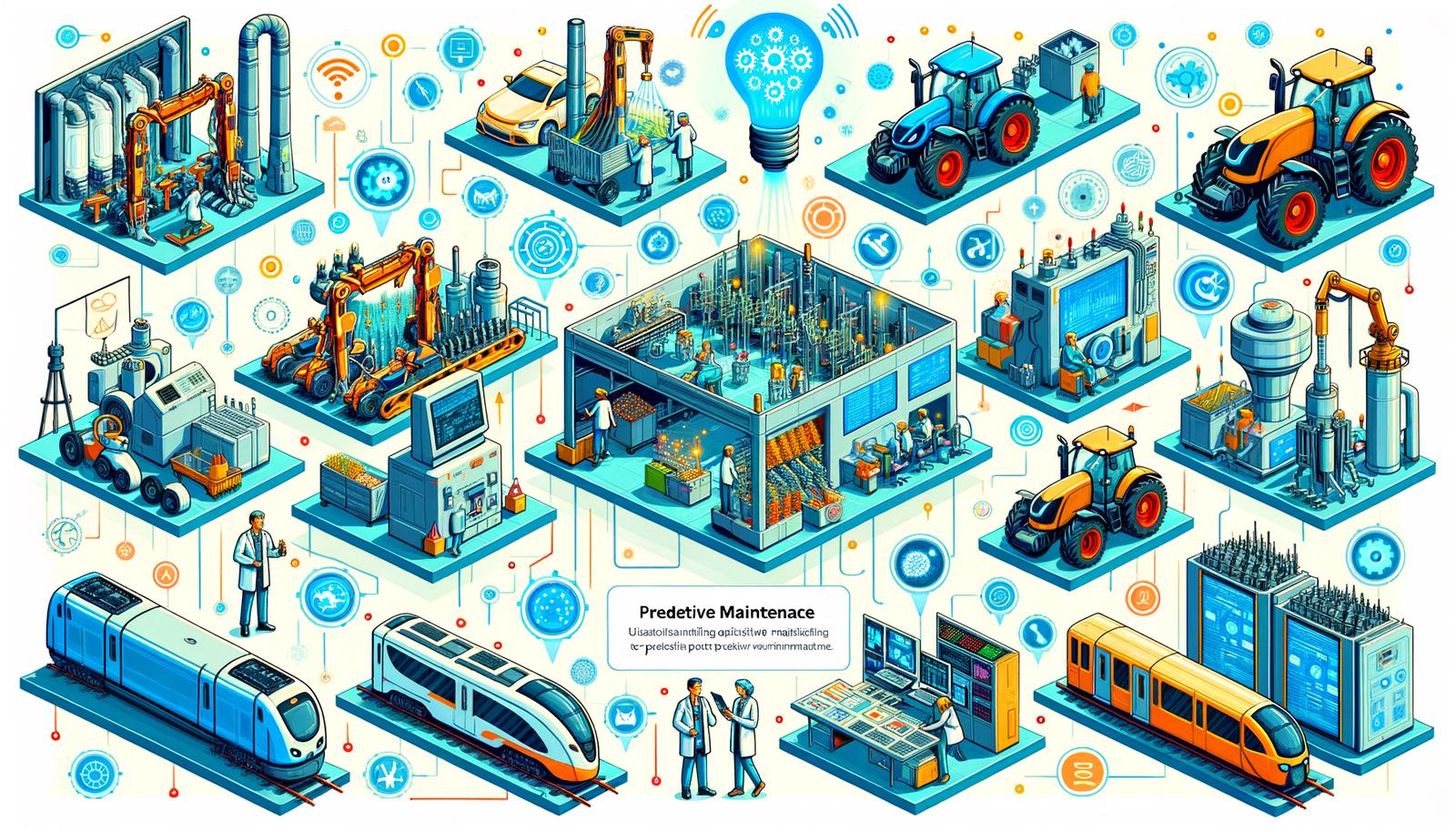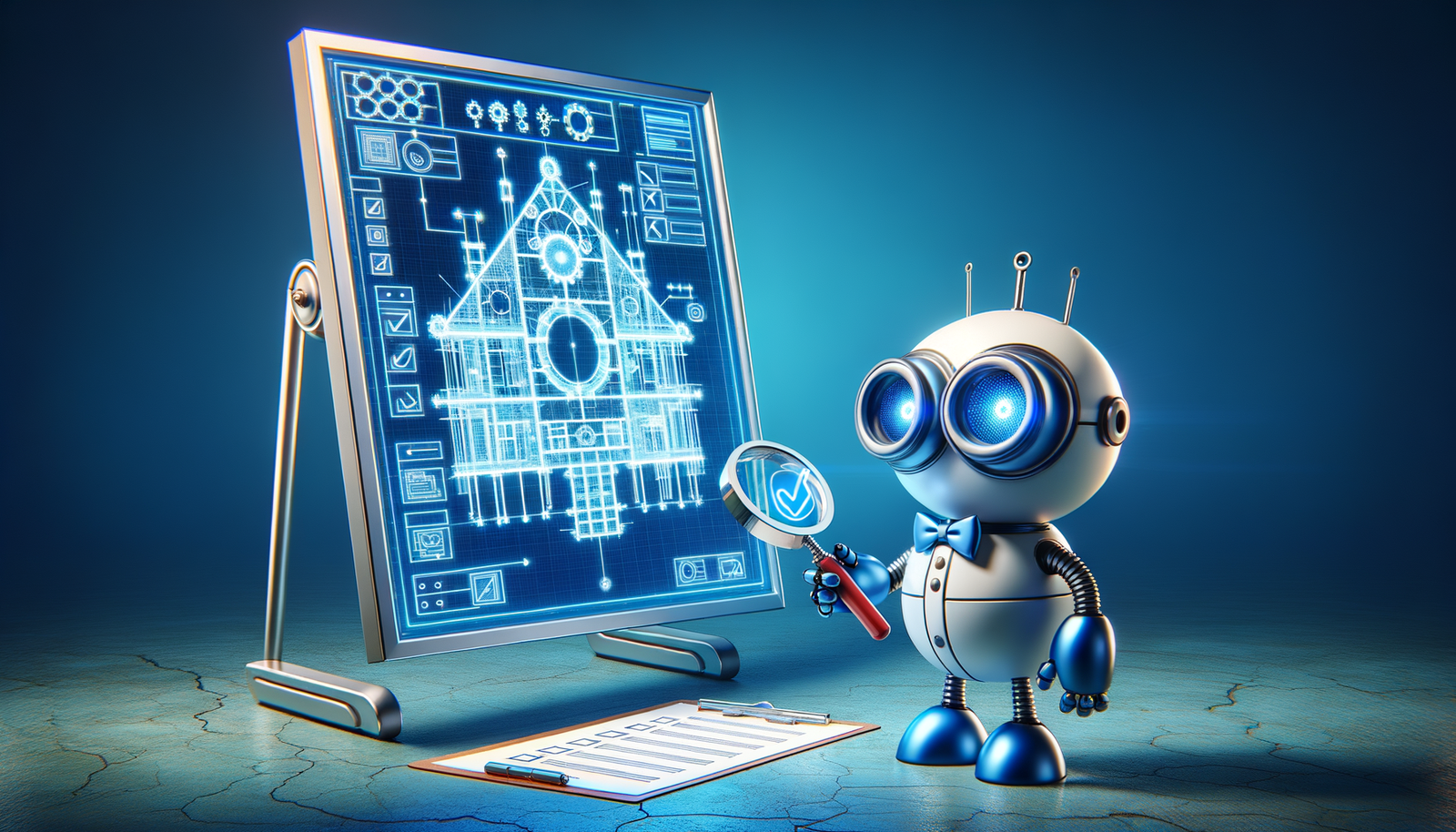Your Cart is Empty
Customer Testimonials
-
"Great customer service. The folks at Novedge were super helpful in navigating a somewhat complicated order including software upgrades and serial numbers in various stages of inactivity. They were friendly and helpful throughout the process.."
Ruben Ruckmark
"Quick & very helpful. We have been using Novedge for years and are very happy with their quick service when we need to make a purchase and excellent support resolving any issues."
Will Woodson
"Scott is the best. He reminds me about subscriptions dates, guides me in the correct direction for updates. He always responds promptly to me. He is literally the reason I continue to work with Novedge and will do so in the future."
Edward Mchugh
"Calvin Lok is “the man”. After my purchase of Sketchup 2021, he called me and provided step-by-step instructions to ease me through difficulties I was having with the setup of my new software."
Mike Borzage
Harnessing AI for Predictive Maintenance: Revolutionizing Equipment Reliability and Operational Efficiency Across Industries
November 20, 2024 7 min read


The advent of artificial intelligence (AI) has revolutionized numerous industries, and engineering is no exception. In today's fast-paced industrial environment, the ability to maintain equipment reliability and minimize downtime is critical. Predictive maintenance, powered by AI, has emerged as a transformative solution that enables organizations to anticipate equipment failures before they occur. By integrating AI technologies into maintenance processes, companies can prevent unexpected breakdowns, optimize maintenance schedules, and significantly reduce operational costs. The importance of using AI in maintenance lies not only in its capacity to enhance operational efficiency but also in its potential to extend the lifespan of critical assets. In an era where operational excellence is paramount, harnessing AI for predictive maintenance is becoming a strategic imperative for engineering firms worldwide. The ability to prevent failures and reduce downtime through AI-driven insights is redefining the maintenance landscape, leading to more resilient and efficient operations.
The Role of AI in Predictive Maintenance
Predictive maintenance is a proactive approach that involves using data analysis tools to detect anomalies in equipment operation and predict when maintenance should be performed. This method promises cost savings over routine or time-based preventive maintenance because tasks are performed only when warranted. At the heart of predictive maintenance is the concept of condition-based monitoring, where real-time data from sensors is analyzed to assess the health of equipment. AI technologies, particularly machine learning and advanced data analytics, significantly enhance this process by providing sophisticated tools for interpreting complex datasets.
Machine learning algorithms are capable of identifying patterns and trends in data that are indicative of impending equipment failures. By training these models on historical data, they can learn the normal operating parameters of machinery and detect deviations that may signal a problem. For example, a sudden increase in vibration or temperature could indicate wear and tear on a mechanical component. AI systems can process these subtle changes more effectively than traditional threshold-based monitoring systems, allowing for earlier detection of potential issues.
Data analytics plays a crucial role in predictive maintenance by handling the vast amounts of information generated by equipment sensors and Internet of Things (IoT) devices. Advanced analytical tools can process both structured and unstructured data, providing comprehensive insights into equipment performance. By combining data from different sources, AI technologies can provide a holistic view of system health, enabling more accurate predictions. The integration of AI into predictive maintenance allows for real-time monitoring and decision-making, which is essential in preventing unexpected downtime and optimizing maintenance schedules.
The applications of AI in monitoring system performance are diverse. AI can be used to develop digital twins of equipment, which are virtual replicas that simulate real-world performance. These models can predict how equipment will behave under various conditions, allowing engineers to test different scenarios and identify potential failure points. Additionally, AI algorithms can prioritize maintenance tasks based on the severity and likelihood of failures, ensuring that resources are allocated efficiently. By leveraging AI, organizations can transform their maintenance strategies from reactive to predictive, resulting in improved reliability and reduced costs.
Industries Utilizing AI for Predictive Maintenance
The adoption of AI for predictive maintenance is widespread across various industries, each leveraging the technology to address unique operational challenges. In the manufacturing sector, the integration of AI into maintenance processes has been instrumental in maximizing productivity and minimizing equipment downtime. Manufacturers use AI-powered predictive maintenance to monitor assembly lines, robotics, and heavy machinery, ensuring that production schedules are not disrupted by unforeseen equipment failures. By analyzing data from sensors embedded in machinery, AI systems can predict when a component is likely to fail and schedule maintenance during planned downtimes, thus avoiding costly interruptions.
In the aerospace industry, the stakes are even higher. Aircraft systems are complex and require meticulous maintenance to ensure safety and reliability. AI-driven predictive maintenance is used to monitor critical components such as engines, avionics, and structural elements. By continuously analyzing data from these systems, AI can detect anomalies that may indicate wear or damage, allowing for timely interventions. This not only enhances the safety of flights but also optimizes maintenance schedules, reducing the time aircraft spend on the ground and increasing fleet availability.
The energy sector, including oil and gas, wind, and solar power industries, also relies heavily on AI for predictive maintenance. Energy infrastructure is often distributed over large geographic areas and operates in harsh environments. AI technologies enable remote monitoring of equipment such as wind turbines, pipelines, and solar panels. By predicting failures before they occur, energy companies can schedule maintenance more effectively, prevent environmental hazards, and ensure continuous energy supply. The use of AI in this sector contributes to operational efficiency and supports the transition to more sustainable energy sources.
Transportation and logistics companies utilize AI to maintain fleets of vehicles and infrastructure. Predictive maintenance helps monitor the health of trains, trucks, and ships, as well as the conditions of roads, tracks, and ports. By analyzing data such as engine performance, fuel consumption, and mechanical wear, AI systems can forecast maintenance needs and prevent breakdowns that could lead to delays or accidents. This not only improves operational efficiency but also enhances safety for operators and the public.
Key benefits shared across these industries include:
- Reduced Downtime: By predicting failures before they occur, businesses can schedule maintenance during non-peak hours, ensuring continuous operation.
- Cost Savings: Optimizing maintenance schedules reduces unnecessary maintenance activities and extends the life of equipment.
- Improved Safety: Early detection of potential failures enhances the safety of both equipment and personnel.
- Increased Productivity: Reliable equipment leads to consistent production output and better customer satisfaction.
The common thread among these industries is the critical need to maintain high levels of reliability and efficiency. By implementing AI-driven predictive maintenance, organizations can achieve these goals and gain a competitive advantage in their respective markets.
Challenges and Future Directions
Despite the clear benefits of AI in predictive maintenance, organizations face several challenges in implementing these technologies. One of the primary obstacles is data quality and availability. Effective AI models require large volumes of high-quality data to accurately predict equipment failures. In many cases, organizations may lack sufficient historical data or may have data that is inconsistent or incomplete. This can result from legacy equipment that lacks modern sensors or from inadequate data management practices.
Another significant challenge is the integration of AI technologies with existing systems. Many organizations operate with legacy infrastructure that is not designed to support advanced AI applications. Upgrading or replacing this equipment can be costly and time-consuming. Additionally, integrating AI systems with existing enterprise resource planning (ERP) and maintenance management systems requires careful planning and often custom solutions. This integration is critical for ensuring that AI insights can be effectively acted upon within existing operational workflows.
Cybersecurity concerns also pose a challenge. As predictive maintenance systems increasingly rely on connected devices and IoT sensors, they become potential targets for cyber attacks. Protecting sensitive operational data and ensuring the integrity of AI models is essential for maintaining trust and reliability in these systems.
Looking forward, advancements in AI and related technologies offer promising solutions to these challenges. Edge computing is emerging as a way to process data closer to where it is generated, reducing latency and the need for massive data transfers. This can enhance the performance of AI models in predictive maintenance applications, especially in remote or bandwidth-limited environments. Advanced analytics and machine learning techniques, such as deep learning and reinforcement learning, are improving the ability of AI systems to work with less data or to learn from synthetic data generated through simulations.
The adoption of standardized protocols and interoperability frameworks can ease the integration of AI technologies with existing systems. Industry initiatives aimed at developing common standards for data exchange and system communication can reduce the complexity of integrating AI into diverse operational environments. Moreover, investment in training and workforce development is crucial. Equipping engineers and maintenance personnel with the skills needed to work with AI technologies ensures that organizations can effectively utilize these tools.
To overcome current limitations and enhance adoption, organizations should consider the following strategies:
- Invest in Data Infrastructure: Implement robust data collection and management systems to ensure high-quality data for AI models.
- Focus on Cybersecurity: Develop comprehensive security strategies to protect data and AI systems from cyber threats.
- Seek Collaborative Partnerships: Work with technology providers, industry consortia, and academia to develop solutions tailored to specific operational needs.
- Prioritize Training: Provide ongoing education and training for staff to build in-house expertise in AI and predictive maintenance.
- Adopt Scalable Solutions: Start with pilot projects and scalable AI implementations that can grow with the organization's needs.
The future of AI in predictive maintenance is bright, with continuous advancements driving greater accuracy and efficiency. As technologies mature, barriers to adoption are expected to decrease, making it more accessible for organizations of all sizes. By proactively addressing current challenges, companies can position themselves at the forefront of innovation and reap the long-term benefits of AI-powered predictive maintenance.
Conclusion
The integration of artificial intelligence into predictive maintenance represents a significant shift in how organizations approach equipment reliability and operational efficiency. By harnessing the power of AI, companies can move from reactive maintenance practices to proactive strategies that predict failures and reduce downtime. This transformation leads to substantial cost savings, improved safety, and enhanced productivity across various industries. The ability of AI technologies to analyze vast amounts of data and provide actionable insights is redefining maintenance processes and setting new standards for operational excellence.
As the benefits of AI-driven predictive maintenance become increasingly evident, it is imperative for industries to invest in these solutions. Embracing AI not only addresses current maintenance challenges but also prepares organizations for future advancements. By adopting AI technologies, companies can build more resilient operations, adapt to changing market demands, and maintain a competitive edge. The journey towards widespread adoption may present challenges, but the potential rewards far outweigh the obstacles.
In conclusion, the future of engineering maintenance is poised for significant innovation through AI. The transformative potential of AI in predictive maintenance is undeniable, offering a path towards smarter, safer, and more efficient operations. As industries continue to evolve, those that leverage AI's capabilities will lead the way in operational excellence and technological advancement. Now is the time for organizations to embrace AI-driven solutions and unlock the full potential of predictive maintenance.
Also in Design News

Automating Compliance Checks in Architectural Design: Balancing Innovation with Regulation
November 21, 2024 5 min read
Read More
Design Software History: Revolutionizing Design: The Impact of IoT on Workflow Efficiency and Innovation
November 21, 2024 10 min read
Read More
ZBrush Tip: Enhancing Realism in ZBrush: Advanced Techniques for Sculpting Hands and Feet
November 20, 2024 2 min read
Read MoreSubscribe
Sign up to get the latest on sales, new releases and more …


